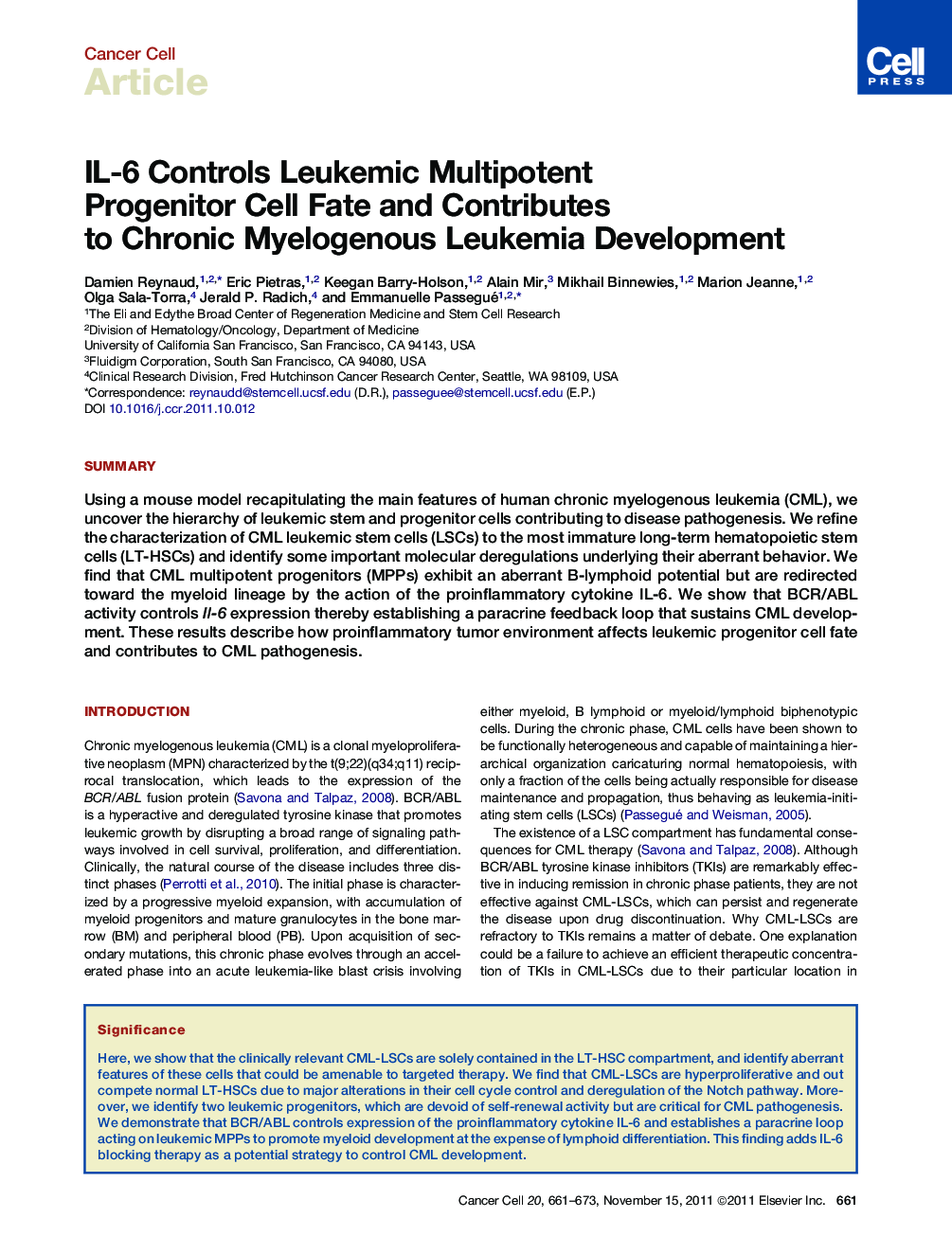| Article ID | Journal | Published Year | Pages | File Type |
|---|---|---|---|---|
| 2107379 | Cancer Cell | 2011 | 13 Pages |
SummaryUsing a mouse model recapitulating the main features of human chronic myelogenous leukemia (CML), we uncover the hierarchy of leukemic stem and progenitor cells contributing to disease pathogenesis. We refine the characterization of CML leukemic stem cells (LSCs) to the most immature long-term hematopoietic stem cells (LT-HSCs) and identify some important molecular deregulations underlying their aberrant behavior. We find that CML multipotent progenitors (MPPs) exhibit an aberrant B-lymphoid potential but are redirected toward the myeloid lineage by the action of the proinflammatory cytokine IL-6. We show that BCR/ABL activity controls Il-6 expression thereby establishing a paracrine feedback loop that sustains CML development. These results describe how proinflammatory tumor environment affects leukemic progenitor cell fate and contributes to CML pathogenesis.
Graphical AbstractFigure optionsDownload full-size imageDownload high-quality image (223 K)Download as PowerPoint slideHighlights► Leukemic multipotent progenitors contribute to CML pathogenesis ► The protumorigenic inflammatory environment modulates CML development ► BCR/ABL controls IL-6 expression levels in myeloid CML cells ► IL-6 dictates lineage specification in CML multipotent progenitors
